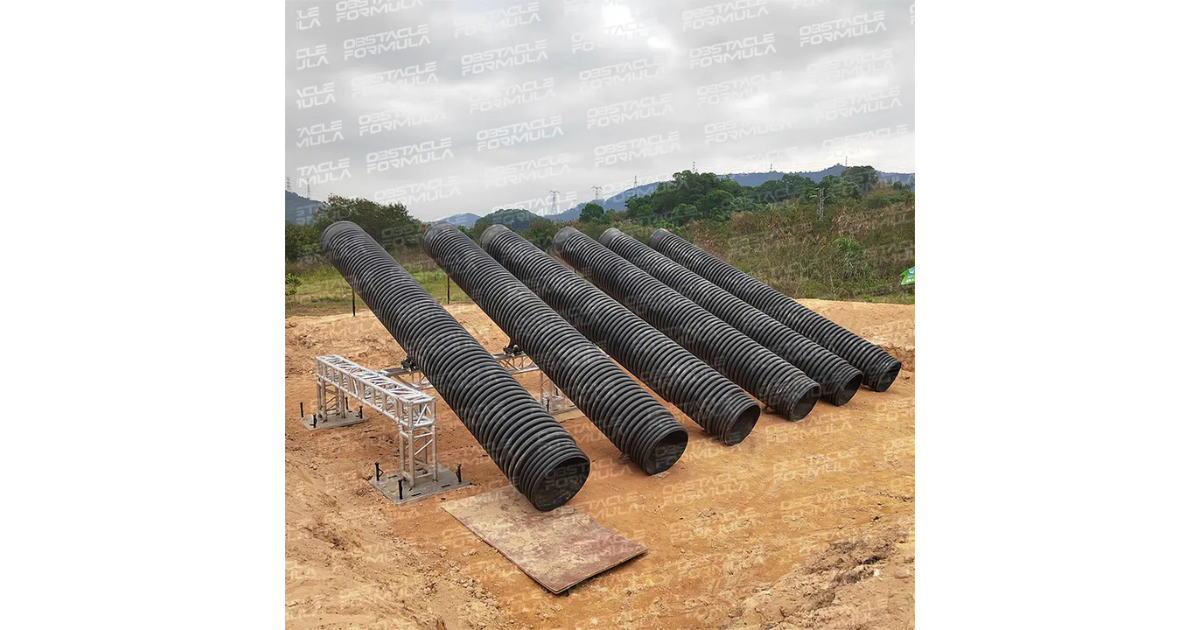איך להתכונן פיזית לאתגר של קורס נינג'ה ווריור
הכנה פיזית לאתגר במסלול נינג'ה ווריור
מה הדבר הראשון שעולה לך לראש כשחושבים על תחרות Ninja Warrior? רוב האנשים מדמיינים את המתמודדים פותרים את המכשולים בביטחון ובקלות. המתמודדים בנינג'ה מtrainedים באופן מושלם. הם מתכוננים למסלול נינג'ה ווריאור עם הרבה ריכוז ומאמץ. זה לא קל. כדי לעבור את מסלול הנינג'ה, אתה צריך תוכנית אימונים מותאמת אישית. כוח גס בלבד לא יעזור לך. מבנה זה תוכנן כדי להפוך אותך לחזק יותר, לבנות את הכוח הסטמי שלך ולעזור לך להתגבר על כל בעיה בריאות נפשית. עם זה, אתה צריך להיות מסוגל להתמודד עם כל מסלול נינג'ה ווריאור בביטחון.

למדו תחילה את האימונים הבסיסיים
לפני שתשקלו לקפוץ על חבלים ולרדת מהם או לטפס על קירות מעוותים, התמקדו בבניית בסיס כושר חזק יותר. יהיה צורך ברמת כושר של קוף כדי לעבור את המסלול בזמן סביר כלשהו. קיימים מספר היבטים שונים שמפוצלים את המסלול לאתגר. מומלץ להכין תוכנית אימון גמישה יותר שמתמקדת בהיבטים רבים כמו: עוצמת ליבה, עמידות נפשית וזריזות תנועה.
השלמת קורס דורשת יסוד טוב שמתחיל בערבות של שרירי הבולדוג, סיבולת קרדיו-וסקולרית וגם סיבולת שרירית. בספרו על אימון טקטי מתוארת סיבולת כמנגנון המסוגל לשאת בעומס פעילות נתונה לאורך זמן, וככל שמתקדמים בכושר הגופני כך הוא הופך ליעיל יותר. סיבולת קרדיו-וסקולרית היא היכולת לבצע קורס מבלי לאבד את נשימת הרוח, בעוד שסיבולת שרירית מאפשרת לבצע פעולות מסוימות, כמו אחיזה ומשיכות חוזרות, מבלי להתרגע. על מנת לפתח עוצמה פונקציונלית וסיבולת, אם הקורס מחייב הליכה עם משקל, למשל בגב/backpack, מומלץ להשתמש באותה תצורה גם במהלך האימון.
היכולת לבצע משימות מסוימות מושגת באמצעות שימוש בכלים או תחומים. אלה כוללים את כל המפרקים, כולל כל השרירים, שמים את השרירים השונים כדי לשפר את טווח התנועה. כדי לשמור על כושר, יש להתאמן בתרגילי קרדיו פשוטים במשך 15 עד 20 דקות, ניתן להגביר בהדרגה ל-20 עד 30 דקות. תרגילים אלה מותחים את השרירים השונים. שמירה על ההתיחה למשך 15 שניות היא יעילה. תוצאות אלו מגדילות במידה רבה את הסיכוי להימלט ללא נזק במהלך התהליך.
פיתוח עוצמה וכישורים לכל קורס
حان הזמן להפוך את הכושר הכללי לכישורים ממוקדים יותר הנדרשים לקורס של גיבור הנינג'ה. בשלב זה, תתעלמו מאימוני הכושר הכלליים ותתחילו לבצע אימון נינג'ה מיוחד. המחסומים שתפגשו ידרשו מכם להפגין עוצמה מתפוצצת, חוזק אחיזה ושליטה כללית בגוף.
ספורטאי נינג'ה משתמש בכוח האחיזה יותר מכל שריר אחר, ולכן אימון של חלק זה של הגוף הוא חיוני. אחת הבעיות הנפוצות שניצבי נינג'ה מתמודדים איתן היא חוסר יכולת להחזיק מוט, חבל או שפת תקרה, ונופלים. הדרך היעילה ביותר לעקוף את הבעיה הזו היא אימון אחיזה. התחלו בתליות מתות, התקדמו למוטות עבים יותר, ואז חליפו ללחיצות בידים בעזרת מגבות על מוט גריפה, ואז התלו ככל שתוכלו. טיפוס על חבל הוא תרגיל מדהים נוסף ללוחמי נינג'ה, כיוון שהוא מחזק את אחיזת הלחיצה של הספורטאי ומשפר את שרירי המשיכה של הגב, הזרועות והכתפיים. בפעילויות נינג'ה, סיבולת שרירים, היכולת לבצע סדרה של פעילויות ללא תשישות, היא חשובה במיוחד.
יחד עם עוצמת האחיזה, היכולת לשלוט בתנועות טיפוס, התנדנויות וקפיצות כמיומנויות נפרדות בצורה חלקה, ולאחר מכן לאחד ביניהן, היא מיומנות חיונית נוספת. בואו לגYM לטיפוס סלעים ולמדו כיצד לבנות ריכוז ותיאום באמצעות תרגילי גוף מלא. התקינו מוטות התעמלות בגינה האחורית שלכם או מצאו מגרש משחקים שבו תוכלו להתנדנד ולתרגל שינון יד-יד. הרבה מכשולים של נינג'ה כוללים גם קפיצות ונחיתות בדיוק וכוח מתפוצץ. תרגלו לנחות מגבהים ומרחקים שונים כדי לפתח פרקים יציבים שליטה ולמנוע נפילות. קבעו יעדים ספציפיים כמו שעשוי ספורטאים מקצועיים. חדלו מלעבור על הרoutines – התמקדו וביארו את המיומנויות שברצונכם לשפר.
הכינו את המחשבה שלכם להתמודד עם הבעיה.
סיום מסלול נינג'ה ווריור הוא מאתגר מבחינה פיזית באותה מידה כמו מבחינה נפשית. כשגופכם עייף ויש מולכם מכשול, זה הדמיון שלכם שמגביל אתכם. עמידות נפשית חשובה כמו עוצמה בבנייה.
בתור משתתף ב-American Ninja Warrior, ג'יי פלורס מעמיד את עוצמתה של ההתמדה הנפשית מול התמדה בהנדסה. הוא מדגיש שגדילה תלויה ביכולת לאמץ, לסבול וללמוד מכישלון. אימצו זאת כאתגר מסלול ה-Ninja Warrior. בכל פעם שנופלים, ראו בכך שיעור שבו תלמדו משהו חשוב על המכשול, הטכניקה שלכם ועל הגבולות שלכם. קבלו את האתגר ובינו שהتقدم בדרך כלל איטי.
בנוסף, ניתן להשתמש בחיזוי ולבצע תרגולי חשיבה במהלך הקורס. כפי שmentions Flores, יתרון אחד של דמיית תוצאות מרובות הוא שהוא מאפשר לך לגשת לבעיה עם היתרון. עיינו במכשולים תחילה, לנתח כיצד ספורטאים ברמה הגבוהה מתמודדים עם המכשולים, ודמיינו את עצמכם vượtים אותם. הרגישו איך יהיה האוחז על המסילות, איך תמדדו את התנודות שלכם ואת הנחיתה. סוג זה של תרגול מנטלי יטביע בתוכם את הביטחון הנדרש, והנתיבים המתאימים על הקרקע ירגיעו את העצבים ויגדילו את תחושת ההכנה במהלך המירוץ האמיתי.
תכנן תוכנית אימון בטוחה עם מבנה
אם ניגשים לקורס Ninja Warrior ללא יעד, יש סיכון להתרסקות או לפציעה. רצוי ליצור קורס אימון שיאתגר בצורה מספקת, אך גם יספק מספיק זמן להתאוששות פעילה כדי שהגוף יוכל להחלים. קורס אימון הגיוני ל-Ninja Warrior יאפשר למאמן לבנות כוח, מיומנות וכישורים בצורה בריאה.
בקורס שתוכנן לשבוע, יש צורך בגיוון מספיק. מתוך הימים, אחד או שניים צריכים להתאים לאימוני סיבולת ולאימוני קרדיו כמו שחייה, והשאר צריכים להתמקד באימוני כוח וכישורים עם דגש מרבי על תхватים או תנועות שמתאימות למונע מפריעות. יום שיקום טהור הוא היום החשוב ביותר שיש לכלול, כדי לאפשר לשרירים להתחזק. יחד, כל הרכיבים מתאימים לטכניקה הרחבה יותר של פירוד. במטרה להעלות את הסיכויים, יש לשלב את כל הרכיבים הנדרשים כדי לתרגל עייפות בקורס, כדי שלא נחשף לסיכון של ירידה בטכניקה.
בטיחות קודם כל, ככה זה צריך להיות בכל אימון. זכרו תמיד להתחיל בחימום מתאים על מנת להגביר את זרימת הדם לשרירים ולהכין את המפרקים לפעולה. לאחר סיום האימון, בצעו קירור ומתיחות על מנת לסייע בהתאוששות. כשאתם מנסים מיומנויות חדשות בסיכון גבוה, במיוחד בגבהים, תמיד עבדו עם בן/בת זוג או עם מחצלות בטיחות. הקשיבו תמיד לגוף שלכם, כאב חד הוא סימן אזהרה. מעבר לכך עלול לגרום לפציעות שעלולות לעכב את ההתקדמות שלכם במשך חודשים. שמרו על מיקוד בכוונות שלכם, עקבו אחר ההתקדמות שלכם וחגגו הישגים קטנים לאורך הדרך. עם מיקוד ותוכנית בטוחה, לא תהיה לכם בעיה לבנות את המיומנויות הדרושות להשלמת קורס לוחמי הנינג'ה.

